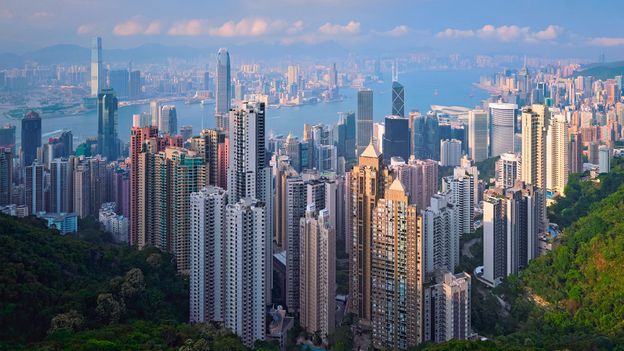Hong Kong protesters are still bent to turn out in large numbers, wearing black for “a day of grief” on what will be marked across China as National Day, a public holiday.
Yet, the authorities in Hong Kong have refused to overturn a ban on a major pro-democracy march on Tuesday, planned to coincide with the 70th anniversary of the founding of communist China.
Protests on Sunday again turned violent as police and demonstrators clashed late into the night.
And police superintendent John Tse told reporters on Monday that “we’re expecting the situation tomorrow to be very, very dangerous”.
Tse accused the protesters of “increasingly resorting to terrorism”, according to the AFP news agency, referring to them using the politically loaded term “rioters”.
Protest leaders were highly critical of the decision not to allow the organised march. The Civil Human Rights Front, which has organised several major rallies in recent months, said that shutting down avenues to peaceful protest could ultimately lead to worse violence.
“Hong Kong is losing its freedom of speech and assembly. Hong Kong is becoming more and more like a police state, a tyranny like Beijing,” said Bonnie Leung, the Civil Human Rights Front co-ordinator.
The city has already scaled back planned events on Tuesday and cancelled a fireworks display.
And its embattled chief executive won’t be there to see it. Carrie Lam will now observe National Day at an official event in Beijing, in what is being seen as a last minute change to her schedule.
It is not known whether Ms Lam has been recalled for a reprimand over her handling of the months-long crisis, or to receive new instructions.
Despite its insistence that Ms Lam is the right person to resolve the situation, the spectre of direct intervention from Beijing remains.
A Reuters report quoting several Asian and Western envoys to Hong Kong said that China appears to have used a troop “rotation” last month as cover to double the deployment of Chinese soldiers in the city’s garrison.
It is no secret that Chinese troops entered the city in large numbers in the small hours of the morning, with Chinese media publishing video and pictures showing the convoy of trucks and armoured cars.
But Beijing’s description of the move as a routine, annual rotation of forces does not ring true, the envoys told Reuters, because at no point has a reciprocal movement of troops out of Hong Kong been observed.
Three of the envoys said the contingent of Chinese military personnel in Hong Kong had more than doubled in size since the protests began. They estimated the number of military personnel is now at a record level, between 10,000 and 12,000, up from 3,000 to 5,000 in the months before the reinforcement.
Meanwhile, China’s president Xi Jinping led a delegation of top officials on Monday to pay their respects at the mausoleum of Mao Zedong, the founder of the communist state.
Mr Xi bowed three times to Mao’s statue at the site in Beijing’s Tienanmen Square, visited Mao’s embalmed corpse and ascended the nearby Monument to the People’s Heroes.
Tuesday itself will be marked by a massive military parade through the centre of the city, with analysts describing the show of strength as a display of Beijing’s ambition to enforce its claims in the region, including to self-governing Taiwan and the South China Sea.
The event is expected to include 15,000 troops, 160 aircrafts and 580 pieces of military hardware, possibly including the nuclear-capable Dongfeng 41 missile that could reach the US in 30 minutes.

